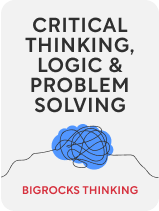

This article is an excerpt from the Shortform book guide to "Critical Thinking, Logic & Problem Solving" by Bigrocks Thinking. Shortform has the world's best summaries and analyses of books you should be reading.
Like this article? Sign up for a free trial here.
Do you know when an article you’re reading is sponsored by a biased advertiser? What’s the reputation of the sources you rely on?
The authors of Critical Thinking, Logic & Problem Solving provide a step-by-step method for improving your ability to think critically and solve problems. They offer tips for conducting and thinking about research and information, including determining whether a source is reliable.
Read more to learn how to evaluate sources for credibility.
How to Evaluate Sources for Credibility
The authors offer the following recommendations for how to evaluate sources for credibility.
#1: Flag Fake News
Learn to identify real news versus fake news. Discuss different media sources with others, and help each other distinguish between accurate news and things like sponsored articles.
(Shortform note: Sponsored content has become more prolific in recent years as advertisers seek new ways to reach customers. However, they can also be very difficult to spot, as research suggests that 70-80% of students can’t distinguish between a sponsored article and an impartial one. To identify sponsored content, look for notices such as “Paid for by…” or “Content from…” that indicate an outside company has paid to make the content.)
#2: Analyze Your Sources
Analyze your sources to ensure their authors aren’t making assumptions but rather are using reliable data to back up their claims. For example, if a source makes a claim like “Studies show that people pay more attention to ads that use large fonts,” look at the studies they’re citing and make sure the data in those studies actually support the claim they’re making.
(Shortform note: Be aware of the difference between primary, secondary, and tertiary sources to assess the originality of the information in a given source. Primary sources are the most original and show evidence as it was first recorded without commentary. Primary sources include interviews, original artwork, and research-based scholarly articles. Secondary sources present information from primary sources along with analyses or interpretations of that information and can include critical reviews, biographies, and legislative reviews. Tertiary sources organize or repackage other sources and can include dictionaries, textbooks, and encyclopedias.)
#3: Assess Your Source’s Authority
Assess the authority of your source. Is this source an expert on the subject? Is it from a reputable media outlet? Does it explain where it got its information?
(Shortform note: To determine whether a source has authority, consider both the source itself and the purpose you’re using it for. For secondary sources, look for sources that are up-to-date and clearly cite their sources. Academic journals are often good sources because they’re peer-reviewed, meaning a group of other people with expertise on the subject have reviewed the article and decided it’s appropriate for publication in the journal. Assessing websites can be trickier since anyone can publish information on a website. Look for an “About” section for the author or publisher. A website blog or social media post may be useful if you’re analyzing the public perception of something, but make sure you still know where the information is coming from.)

———End of Preview———
Like what you just read? Read the rest of the world's best book summary and analysis of Bigrocks Thinking's "Critical Thinking, Logic & Problem Solving" at Shortform.
Here's what you'll find in our full Critical Thinking, Logic & Problem Solving summary:
- A step-by-step guide for improving critical thinking and problem-solving skills
- Tips for conducting better research and finding reliable resources
- How to improve your communication and storytelling skills






